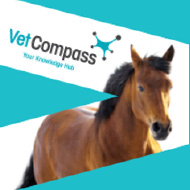Study highlights extent of antibiotic use in horses

"The surveillance of equine antimicrobial usage helps the veterinary profession demonstrate their commitment to the responsible prescribing of antibiotics in the horse" - Dr Sarah Allen, VetCompass.
As World Antimicrobial Awareness Week gets underway (18-24 November), new research by the Royal Veterinary College (RVC) has revealed the extent of the use of systemic antimicrobials in UK equine practice.
The first-of-its-kind study, published in the Equine Veterinary Journal, also uncovers the lack of routine culture and sensitivity testing, particularly before the prescription of 'last resort' Category B antimicrobials.
Until now, little research has been carried out to monitor equine antimicrobial use in the UK. In this study, researchers analysed the prescription data and clinical notes of some 64,000 horses, ponies and donkeys from 2018, supplied by 39 veterinary practices participating in the UK VetCompass programme.
Their findings show that in 2018, around 20 per cent of equines attended by the participating veterinary practices were prescribed an antimicrobial licensed for systemic administration. Of these, nine per cent received a Category B 'highest priority' antimicrobial – whose efficacy needs to be preserved for the treatment of serious illnesses in human medicine.
The study also highlights several risk factors associated with increased antimicrobial usage. Scientists found that the highest usage groups of Category B antimicrobials were equines under the age of one, racehorses and Thoroughbreds. Meanwhile, the most common disorders treated with antimicrobials were urogenital, integumentary and respiratory conditions.
It is hoped that the study will encourage others to consider and benchmark their own usage and promote more responsible antimicrobial prescriptions – especially those deemed to be of the highest critical importance.
Dr Sarah Allen, VetCompass Data Analyst, RVC said: "The surveillance of equine antimicrobial usage helps the veterinary profession demonstrate their commitment to the responsible prescribing of antibiotics in the horse.
“We hope that by reporting on how commonly antimicrobials are prescribed to horses, and demonstrating where stewardship may be improved, others will look to compare and better their own prescribing of these vital medicines.”



 BSAVA is to partner with BVA Live (11-12 June 2026) to champion clinical research.
BSAVA is to partner with BVA Live (11-12 June 2026) to champion clinical research.